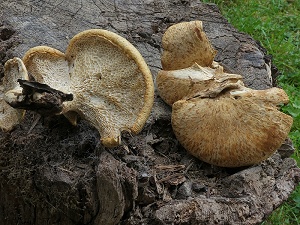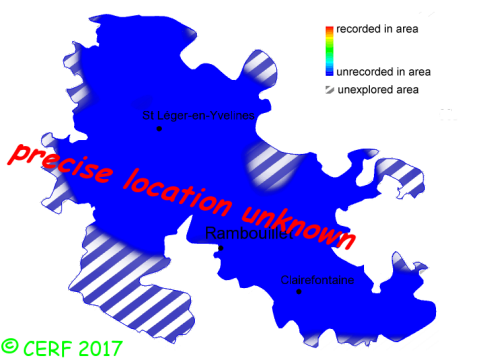| Polyporus mori Fr. |
|
|
|
|
|
|
The cap is bright orange-yellow to reddish ochre, round or oval, more or less depressed at its centre but often so when mature. The cap surface is slightly downy, soon disruptiing into dark adpressed scales. The cap margin is inrolled a long time, then often wavy and slightly fringed. The stem is white to cream, often off-centre, cylindrical and full. The flesh is cream, quite soft to fleshy, thin in cap; its taste is mild; the odour is faint; The tubes are cream-white then pale yellow, short (5mm). The pores are cream to pale yellow, short (5mm). The spore print is white. It grows on dead deciduous wood, preferably on ash, also on walnut. The fruiting period takes place from April to May.
Distinctive features : yellow brown cap, with darker scales on the surface; white stem, off-centre, more or less equal; white to cream pores, angular and decurrent, very stretched especially towards stem (up to 5mm long for 1-2mm wide); very faint odour; on dead branches of ash trees Polyporus mori is rare and confined in the forest of Rambouillet, and is quite rare, more generally speaking . | ||
|
page updated on 14/01/18

